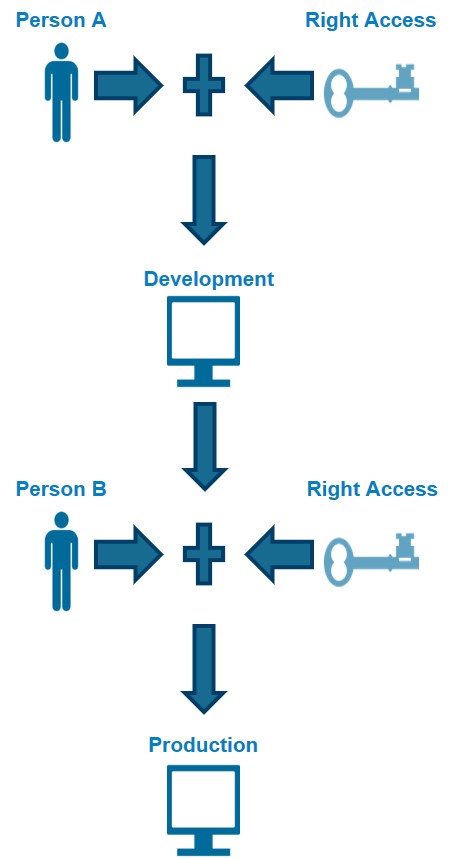
For many companies the thought of being audited is never a fun one. Especially when most audits are focused on documentation that is slow to react to an ever-changing environment in the Technology sector. If your company is attempting to utilize Agile methods but you fall under strict regulations for the Payment Card Industry (PCI), Health Insurance Portability and Accountability Act (HIPAA) or Sarbanes-Oxley (SOX), then there is usually a high level of trepidation when it comes to full adoption of Agile into your development. One of the biggest pitfalls that companies run into is in thinking that Separation of Duties (SoD) cannot be achieved in an Agile environment.
What is Separation of Duties?
Separation of Duties is ensuring that no one person holds all the keys to enact any change. If a developer can create a product and push it into production with no checks, then this is a violation of SoD. The two basic premises this is designed to create is the elimination of fraud and the detection of errors. So, by having checks and balances along the way your company is more secure against fraud and error that would naturally occur with the introduction of human intervention.

This separation is key for any of the above-mentioned standards, PCI, HIPAA or SOX. An excerpt out of the PCI Data Security Standards states,
“In environments where one individual performs multiple roles (for example application development and implementing updates to production systems), duties should be assigned such that no one individual has end-to-end control of a process without an independent checkpoint.”
All three of the regulations share similar verbiage. No one person can have control from the beginning to the very end. But that is the inherent beauty of a fully adopted Agile system. No one person has complete control. The system relies heavily upon automation.
If you look at a normal Agile Development process (see graphic below) there are still clear timelines and interjections of human input, on top of the vast automated input provided. This creates a system that brings in a committee of personnel to achieve certain goals every sprint. When automation is laid on top of the human based work then another layer of checks and balances is established. And this automation is not just a random compiler that was pulled off the internet. It has agreed upon criteria and testing mechanisms that have been refined over time by a team that documents what is being tested against. So if an auditor were to ask, “How do you check against X?” then you would have a clear answer from the documentation that “X” is checked and logged at this stage in the process.

If your developers are utilizing proper version control and your automated systems are documented then you would have a higher chance of catching any changes, whether purposeful or accidentally, than you would in another life cycle development model. If left purely up to humans, then the ability to get distracted and lose focus would end up creating more errors than a more highly automated system would. Agile practices can help reduce human error.
Additionally, if you are looking to capture any sort of fraud then you would be able to implement more monitoring on your privileged developers specifically. Between this monitoring and the automated testing, it should be easily caught if one of your developers goes outside of a scope that they are supposed to be working in, thus protecting any sensitive data that would be required under PCI, HIPAA or SOX regulations. Not only will this automation and monitoring help stop fraud internally, it also can help detect actors on the outside attempting to gain access to your sensitive data.
Do I actually need Separation of Duties?
Yes. And if utilizing an Agile framework you already have that separation. Everything about creating an Agile environment lends itself towards highly auditable and loggable activity. This same activity is what is required for SoD. Checks and balances are achieved when you create, document and continually refine the process of how your company delivers viable product sprint after sprint. Auditors are quick to say that Agile doesn’t support the necessary separation, but usually that is because there isn’t a single person that they can put their finger on that does a certain activity. Instead they have a refined and documented product, both heavily monitored and logged, that is the independent checkpoint they require to ensure that no individual has complete end-to-end control.
If you have any further questions on how your Agile environment follows Separation of Duties, feel free to contact AKF.
Related Articles: